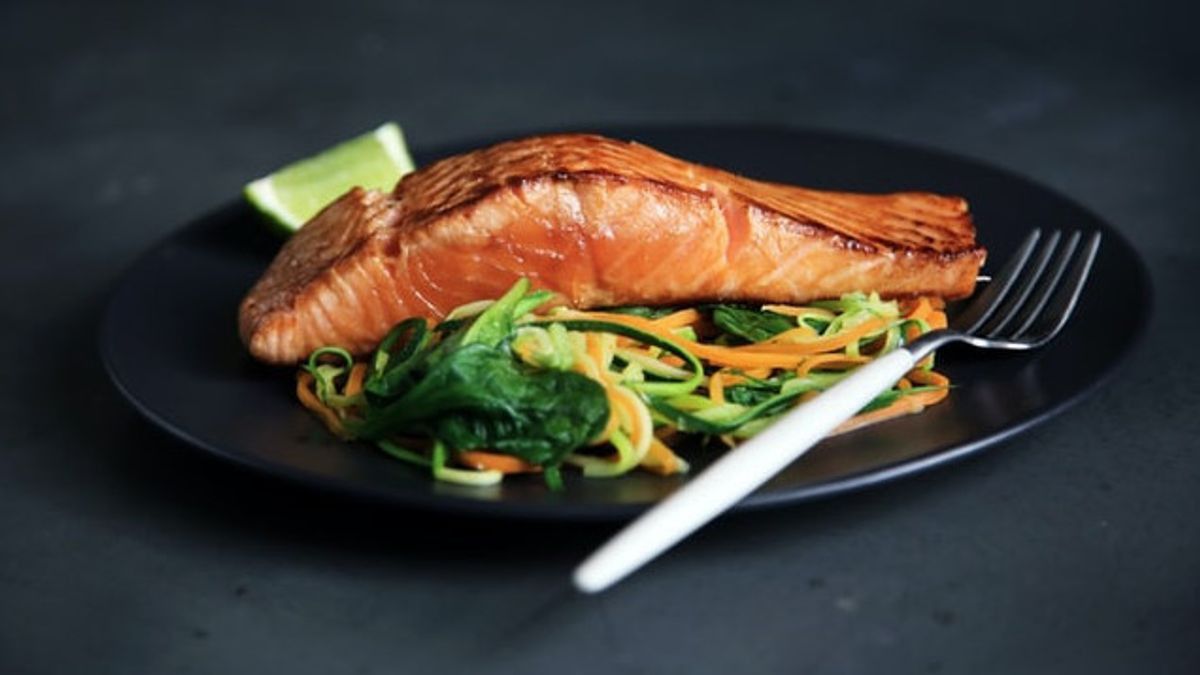
YOGYAKARTA Although all fish can be a source of protein, vitamins, and minerals that are very useful for human health, the type of fatty fish is a very recommended food.
Fish that contain fat can actually help prevent heart disease, stroke, and lower cholesterol levels.
On the Medical News Today website, it is said that fatty fish have a lot of oil or fatty acids in all body tissues and their stomach cavities. Usually, fish with a high oil content are characterized by a darker or redder meat. Meanwhile, fish with fat content that is not too high usually have brighter color meat.
The following is a list of fatty fish that can be purchased or found in the Indonesian market. It is recommended to eat fish that are still fresh in good condition.
The Ministry of Maritime Affairs and Fisheries (KKP) through its remission website explained that salmon is the fish with the highest fat content which is quite popular. This fish meat is orange. Each 100 grams of meat contains approximately 1.4 grams of omega 3 fatty acids. In addition, salmon also contains quite abundant protein and iron minerals. One of the benefits of often consuming salmon is maintaining the health of the heart organ.
These fish are usually served by suffocation or processing by filling. These fish are rich in nutrients, including containing a fairly high omega-3.
This type of fish can be found in Indonesian waters. Like salmon, Kembung fish are also rich in omega 3 fatty acids. Each 100 grams of convex fish meat contains approximately 2.6 grams omega 3. In addition, this fish also contains about 21.4 grams of protein and 0.9 grams of iron.
sardines are widely sold in various markets, both traditional and supermarkets. This fish is also rich in omega 3 fatty acids. Fish which are often packaged in the form of cans have 2.7 grams omega 3 which is useful for the health of the body.
These fish are usually sold in fillet or boneless meat. This is because the catch of fishermen is usually relatively large in size so that packaging is more difficult. In the ratul 100 grams of macaquere meat, it turns out to contain 5.5 grams omega 3. This fish is quite easy to find in various markets.
관련 항목:
On the official KPP website, every 100 grams of tuna without bones contains approximately 2.1 grams omega 3. Not only that, tuna also contains fairly large protein and other useful substances such as potassium, vitamin B, and selenium.
Trout fish are not very familiar to the public. Even though this fish contains quite a lot of omega 3 for the health of the body. Each 100 grams of tiut fish meat contains 1.7 grams omega 3. In addition, this fish is also rich in protein and various minerals and vitamins.
In addition to the type of fatty fish, visit VOI.ID to get other interesting information.
The English, Chinese, Japanese, Arabic, and French versions are automatically generated by the AI. So there may still be inaccuracies in translating, please always see Indonesian as our main language. (system supported by DigitalSiber.id)

















